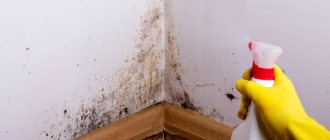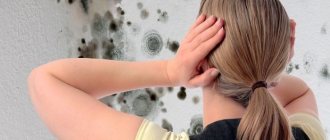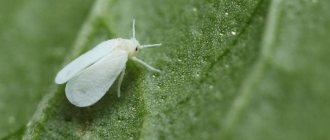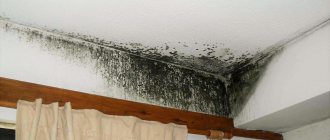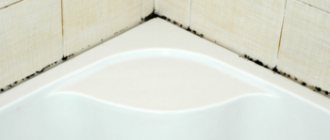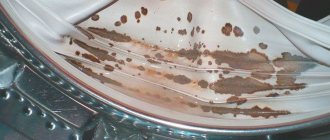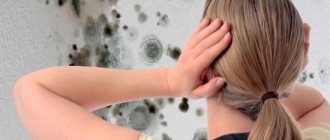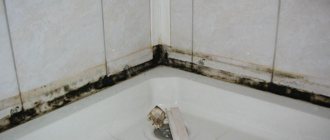Household mold may seem harmless, but its danger to humans should not be underestimated. Mold particles in an infected room spread through the air, entering the body through breathing. Regular exposure to mold depletes the immune system and triggers severe asthma attacks. Dealing with the effects of mold infestation can take years.
Mold is a fungus with a high destructive potential. It destroys repairs, damages furniture, and accelerates the wear and tear of equipment. It is almost impossible to remove it forever using household means. The slightest fluctuations in humidity - and a dark coating appears on the walls again. Don't know how to get rid of mold? To save your time, we have selected the most effective remedies for mold and mildew in the home for DIY treatment that give the best results.
It is necessary to eliminate favorable conditions for the formation of fungus
- Set up ventilation. If there is a problem with air circulation in the room, you need to ensure high-quality air ventilation by installing forced air supply devices.
- Warm up and dry the room. If new mold colonies constantly appear in the problem room, it needs to be dried using a heat gun.
- Checking the attic and basement. If there is dampness in these rooms, it is necessary to check the foundation and roof of the building. Establish waterproofing and vapor barrier in the premises.
- Exposure to ultraviolet radiation. If it is possible to ensure the penetration of sunlight into the room, then you need to take advantage of it. Mold does not tolerate exposure to sunlight well.
Simply put, you need to take all measures to reduce the humidity in the room.
Solutions for removing fungus and mold
In any hardware and construction store today there is a huge selection of solutions that will help in the fight against hated mold and mildew.
- Before treating with a purchased solution, you need to clean all surfaces from visible mold. This can be done using a soap solution and a spatula.
- After cleaning the surface, wash it well with clean water.
- Wait for the surface to dry completely.
- Apply the purchased antiseptic solution in two or three layers.
Useful tips for mechanical cleaning
- The most important thing is to thoroughly remove visible plaque. If the layer is fresh and has appeared recently, then you can eliminate mold from the walls with a sponge or brush using a regular soap solution.
- It seems possible to remove mold from wallpaper only at first. If the layer has become ingrained, then it must be removed by cleaning it down to the plaster.
Important! You can’t hesitate, because household mold can penetrate through the plaster to concrete and brick in just a year.
- During the removal process, wet the wall, this will prevent spores from spreading through the air.
- You can remove fungus on a wall whitewashed with lime using a scraper or sandpaper. Don't forget to wet the ceiling or wall before starting.
- Mold in the bathroom prefers to settle in the seams between tiles or in joints near plumbing fixtures. Use a scraper to clean the affected area and go over the seams with sandpaper. Dry, apply disinfectant, and reseal the areas between tiles and joints with sealant and grout.
Important! Immediately place all dirty residues in a sealed bag rather than scattering them on the floor. This will prevent the fungus in the bathtub from spreading further.
Professional mold control
When a person himself cannot cope with the appearance of fungus and mold, professionals can come to his aid.
Prevention measures
The best prevention of fungus is to maintain cleanliness and prevent dampness. Ventilation valves must be installed on double-glazed windows, and ventilation must be installed in bathrooms and kitchens. It is important to insulate freezing walls, and in a private house to build a strong foundation and blind area. You need to check the plumbing: there are no leaks or breakdowns, otherwise fungus will inevitably settle in the bathroom.
If the air is too humid, uniform heating and installing an air conditioner to dry the air help. Reduces the risk of mold by drying clothes on the balcony rather than in the apartment, regularly using a kitchen hood, and frequently washing areas where mold may appear with antiseptic agents.
Experts recommend
- Using special equipment, they will conduct a study of the microclimate in the premises.
- They will analyze all damaged surfaces on which colonies of fungus and mold have settled.
- Find out the cause of the mold.
- They will select a professional product that can completely rid the room of unwanted fungus.
- Completely clear the air of mold spores. For this purpose, specialists in this area use ultraviolet lamps.
If there is a need to eliminate the causes of mold, then specialists can carry out the necessary construction and installation work. As a rule, this involves repairing and correcting the operation of ventilation, laying insulation, etc.
A huge advantage in the work of professional companies is that they provide a guarantee that mold will not bother the owners in the near future. Many organizations undertake to remove mold and mildew free of charge if it reappears.
In order to protect wooden boards, logs or facing elements from fungus and mold, you can do all the work yourself. In order for all the measures taken to be successful, you must strictly follow the recommendations of the manufacturer of special products and comply with safety standards.
In order for the wood surface to retain its original appearance for a long time, you need to choose the right impregnation and decorative protection. With properly installed ventilation and thermal insulation, mold will never settle in the house and will not become a problem for its inhabitants.
Traditional methods
Such methods are often in no way inferior to industrial drugs, and are much cheaper.
Table vinegar
An excellent method for destroying fungi and microorganisms. For this method, you need to take 9% vinegar and mix it with water in a 50:50 ratio. Rub the problem areas with the resulting mixture. Vinegar works well against mold in seams and chipped tiles.
Baking soda
This product has long been known for its versatility. Soda has an excellent antiseptic effect; a soap-soda solution is often recommended for disinfecting surfaces in a house where there is an infected patient. You can also disinfect children's dishes with soda, so using such a product to combat mold will be a safe way. The abrasive particles of the product will not only eliminate mold, but also clean the contaminated area.
How to use? Mix soda with vinegar. Such a mixture will give a reaction during which a lot of foam will be released. Use this foam to rinse problem areas. After treatment, the soda should be rinsed off with clean running water to prevent white stains from forming.
Tea tree oil
This is the best natural antiseptic. Tea tree oil has long been known for its healing and disinfecting properties. Moreover, this product has a pleasant smell and does not emit toxic substances.
Recommendations for use: mix 2 tablespoons of essential oil with 0.5 liters of water, mix thoroughly and pour into a spray bottle. Then spray the mixture onto the dirty areas. The advantages of this method include the fact that there is no need to wash off the oil. But you cannot apply the product to paper surfaces - greasy stains will remain.
Hydrogen peroxide
And one more effective and long-term way. Peroxide can disinfect the bathroom and remove fungal stains in a matter of minutes.
How to prepare: mix 100 g of boric acid with 200 ml of hydrogen peroxide. Then add 200 ml of vinegar. Dilute the resulting mixture with 0.5 liters of water. After the ingredients are completely dissolved, dip a sponge into the solution and rinse all contaminated areas with it.
If you have had experience using the products described in the rating, write your reviews in the comments.
